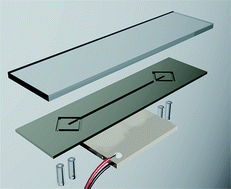Acoustofluidics 5: Building microfluidic acoustic resonators
Abstract
Acoustophoresis is getting more attention as an effective and gentle non-contact method of manipulating cells and particles in microfluidic systems. A key to a successful assembly of an acoustophoresis system is a proper design of the acoustic resonator where aspects of fabrication techniques, material choice, thickness matching of involved components, as well as strategies of actuation, all have to be considered. This tutorial covers some of the basics in designing and building microfluidic acoustic resonators and will hopefully be a comprehensive and advisory document to assist the interested reader in creating a successful acoustophoretic device.

- This article is part of the themed collection: Acoustofluidics

 Please wait while we load your content...
Please wait while we load your content...